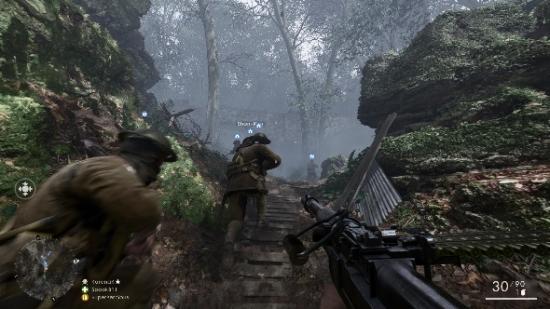Battlefield 1 is without a doubt 2016’s most anticipated shooter. It sees developers DICE tread new territory with the First World War, a conflict rarely seen in games and a tricky period to set a huge multiplayer shooter in. But they’ve jumped feet-first into the mud of the trenches and created a huge new entry in the all-out-war franchise.
Head onto the best battlefields on PC with these excellent FPS games.
As with the last few games in the series, Battlefield 1 is split into two sections: the classic 64-player online modes, and a narrative-led single-player campaign. In this review you can find details thoughts on both, with a score for the whole package at the bottom.
So is Battlefield 1 DICE’s finest hour?
Battlefield 1 PC single-player campaign review
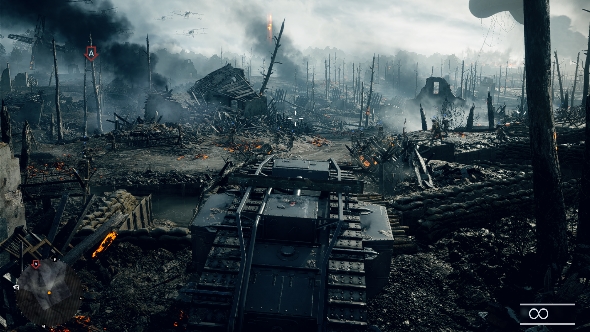
The Battlefield series is celebrated for its grand-scale multiplayer, but significantly less so for its single-player. While Bad Company 2 was solid and Battlefield 4 had its moments, these campaigns are quickly forgotten in favour of the war stories players create on their own. With its new historical setting though, Battlefield 1 is well-positioned to offer a grand, epic campaign across numerous fronts and scratch that 20th century itch that we’ve had since Call of Duty left the 1940s behind. Alas, despite the promise, once again DICE have produced another middling single-player game peppered with the odd brilliant moment.
The campaign is split into six chapters, or ‘war stories’. They’re presented rather well: each is the recounted tale of a First World War soldier, all from a different front and year of the conflict. Among your roles are a young British chauffeur-turned-tank driver, a cocky American pilot, and a tough woman fighting alongside Laurence of Arabia’s rebels. While you’ll only spend just over an hour with each, DICE have managed to make them all feel full of character. They’re much more defined personalities than anything you’d find in Infinity Ward’s back-catalogue.
You won’t play any of these characters to begin with though. As the title cards roll on the campaign, you’re launched into a stunning prologue chapter that physically demonstrates the horror of the war. Ankle-deep in mud and trapped in the ruins of a shelled-out building, you’ll hold off waves of enemies marching on your position. Smoke bellows, soldiers scream, and the screen fades to black as you take a killing bullet very quickly.
Instead of respawning you, the prologue instead displays the birth and death dates of your character, and then throws you into the boots of another doomed soul in the same battle. You’ll die and inhabit a new soldier several times in this mission. It’s a genuinely harrowing method of explaining the toll World War One had on the human population. Soldiers often lasted just a few moments in battle, and died tragically young.
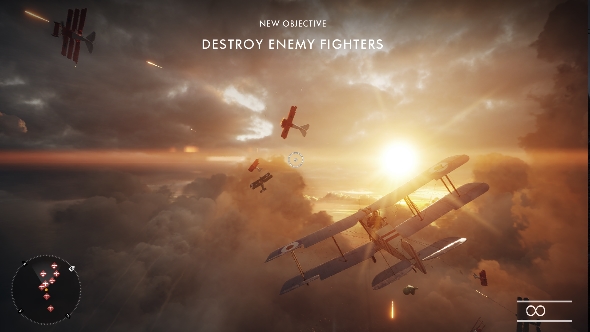
The prologue is, unfortunately, Battlefield 1’s best campaign moment. It’s not that it goes on to be a burning wreck of a mission, but none of it caries the gravity of this brutal and harrowing opening ten minutes. While the narrative provides some humanity for the characters, they feel almost superheroes in comparison to the damned men you play as in the opening. Indeed, there’s one section where, encased in medieval-like armour, you take on a squadron of attack planes using an AA gun. A worried character asks “Were you still safe behind your armour?” to which your Italian hero replies “Of course, nothing could dent it”. Hardly the most authentic depiction of modern history’s most horrific war.
While authenticity was clearly not on DICE’s priority list, the angle of approach it takes is more interesting than you may expect. War shooters, influenced by the dominance of modern Call of Duty, have typically taken the Michael Bay approach, with bombastic explosions aplenty and a strong dose of ‘Hoo-ah!’. Battlefield 1 rejects that in favour of the Steven Spielberg approach: while the action more often than not feels inflated and videogame-y, there is an underlying sense of reverence and honour. Even when you’re running across the top of the flaming balloon bag of a sinking zeppelin, there’s still a kind of cinematic beauty to it as opposed to gory gratuity.
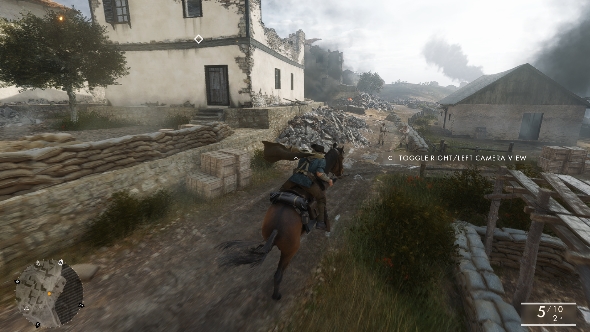
While there are some striking moments – soldiers running through no man’s land as you back them up with a tank, planes dogfighting among sunset skies, rain-drenched trenches suddenly illuminated by lightning-forked strikes – Battlefield 1’s war stories just don’t come together to provide a satisfying game. Its biggest problem by far is challenge: there’s next to none. Very often you’re just running from one hot zone of enemies to another, shooting them all dead, and moving on. The maps are huge and gorgeous and promise combat variety, but the way enemies are placed means it’s frequently just a case of pushing forward, mowing men down, then rinse and repeat.
The most startling element is just how few enemies there are. The First World War is known for its attritional tactics, swathes of men swarming the enemy, and there’s practically none of that in Battlefield 1. You never feel swamped or swarmed, and things are made much easier by the AI which commands enemies to merely stand or crouch while shooting at you, making combat feel extremely static.
When playing the campaign I often thought back to the early Call of Duty games, which were characterised by their overwhelming odds. In battles like Stalingrad you’d have to fight tooth and nail to take ground, and after a dozen deaths that ‘mission complete’ screen felt like a true achievement. There’s nothing of the kind in Battlefield 1, which means the game generally fails to convey the desperate struggle that World War One was. A playthrough on the standard difficulty feels a breeze aside from one notable mission involving train-based artillery. Dialing up to hard makes you more vulnerable, but doesn’t provide the required cataclysmic atmosphere.
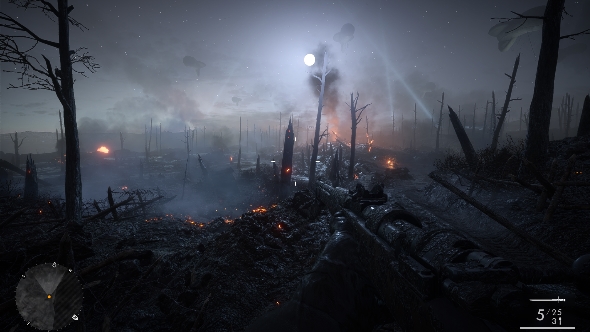
There’s also no chance to develop the difficulty curve. After the mandatory prologue, you can play the five remaining War Stories in any order you wish. This means each one has to have their own difficulty curve, so each starts very simply and ends with a tougher finale. As such you never get an overall experience arc, and so it feels like you’re starting over and over. The system works very well for narrative, but less so for allowing the game to grow in complexity and challenge.
Combined with the lack of period-correct tactics (moment to moment, this feels like a traditional ‘man vs the bad guys’ FPS), it feels that DICE have really neglected the opportunities that a 1910s setting offers. You’re on your own far too often, there’s little horror, and there’s not even a stomach-turning sequence in which you have to go over the top. There is a beach raid scene though, because of course we can’t make a period war shooter without one of those.
DICE could really have said something with Battlefield 1’s single player, and the prologue is a glimpse at what an arguably braver studio could have achieved. But instead they’ve settled to create a simply serviceable, forgettable set of miniature campaigns. There’s some enjoyment to be had in a few objectives, and the detail in which the era’s weapons and landscapes have been created is extraordinary, but once again it’s clear that DICE’s strength is in creating battlefields for dozens of players to make their own war stories in, rather than telling their own tales.
Battlefield 1 PC multiplayer review
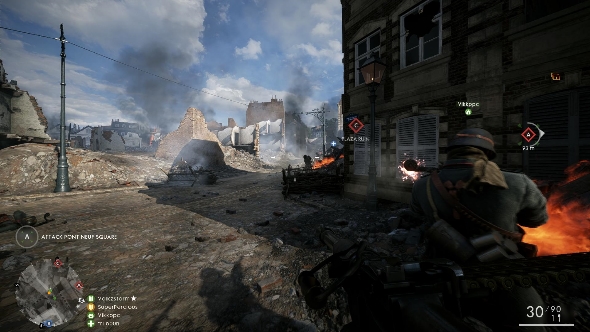
The shift to the early twentieth century has meant big changes for Battlefield 1, but the core formula of the series remains entirely unchanged. This is a game that chiefly revolves around two multiplayer match types: the point-capture Conquest, and the objective attack/defend Rush mode. With a combination of infantry, tanks, boats, and aircraft, playing Battlefield 1 feels instantly familiar. It’s chaotic, grand, and very, very loud. The things you love about DICE’s shooter are still very much present and correct.
But this is definitely a game attempting change. The first thing you’ll likely realise is that there’s a rather different pace to Battlefield 1. The series has traditionally been slower and more tactical in comparison to the twitch stylings of Call of Duty and Counter-Strike. This time around it seems like seven shots of adrenalin have been injected into the game’s veins: this is the most hyper a Battlefield has ever felt.
It’s a very strange sensation, especially considering the technology at play. The 1900s setting means much of the weaponry is heavy, slow, and cumbersome: field guns require cranking after every shot, and many rifles feature long reload times as stripper clips are forced into magazines. The attritional tactics of the First World War would also suggest Battlefield 1 should work at a slower pace, but DICE have done nothing to adjust their core formula to suit a war fought often from trenches and with less mobile weaponry. Moment to moment it is as kinetic as anything else in the series, which in the grand scheme of things is admittedly a better option than being bogged down in a muddy field for 40 minutes.
In other concessions which distort period accuracy, you’ll find that machineguns are ten-a-penny in Battlefield 1. Two of the four classes are able to use rapid-fire weapons, and the Medic – armed with a single-shot self-loading rifle – can even adjust their weapon to fire in an almost automatic pattern. Then there are the Elites: weapon pickups that encase you in absurd armour and equip you with almost unstoppable guns, effectively turning you into a steampunk space marine. It’s a far cry from the bolt-action rifles that almost every soldier in the conflict was armed with, but does create a very interesting weapon ecosystem.
The key to Battlefield 1’s formula is how the weapons all interact with each other. Assault troopers carry SMGs, which fire like woodpeckers but lose all accuracy after about six feet. The Medic’s SLR is far more punchy and accurate over distance, but cycles its rounds very slowly. Not as slow as the Scout’s bolt-action rifle, mind, but they have the advantage of huge range and deadlier stopping power.
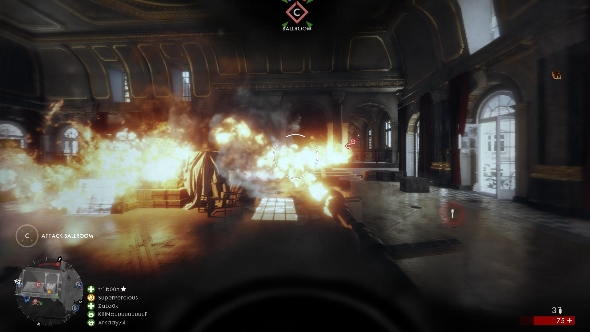
The fact that each class has to use one very specific category of weaponry makes them distinct and vital parts of a much larger war machine. Each team needs to have a good variety of all four of the main classes in order to be effective. Teams are once again split into squads of five players, and these need to be equally diverse. Five men armed with suppressive LMGs are unlikely to dominate, since their huge bullet spread makes killing blows more difficult.
This adjustment to combat makes Battlefield 1 one of the stronger entries in the series when it comes to pure fighting. Battlefield 4 offered an incredible amount of freedom as to which guns each class could equip, but the eventual outcome was that most people used assault rifles since they’re the best all-rounder. By forcing people to use different weapons, Battlefield 1 adds a brilliant amount of variety to its combat hotzones.
Well, in theory. It’s of no surprise that a sizable proportion of players would rather use a machine gun than a slow-firing rifle. As such, important roles such as the Medic are often underserved. Why would you pick the guy who spends almost ten seconds reloading his gun when you can be in the thick of it unloading round after round by holding down the mouse?
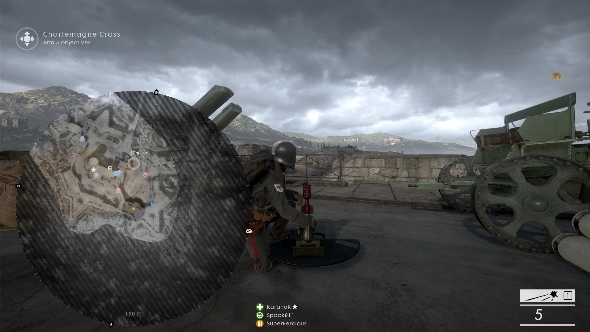
The result of this has larger repercussions than just fewer Medics, though. When you die you’re offered the choice of hanging around for a medic to revive you, or skipping straight to the respawn screen. Because Medics seem less popular, many players just skip to the respawn screen. This means for anyone actually playing Medic, there’s less opportunity to do your job.
This kind of behaviour leaks into other aspects. Far too often you’ll be in a squad with a leader who doesn’t understand how to use the orders system, so you’re stuck with a directionless team and missing out on bonus points for capturing zones designated by your captain.
At the risk of being ‘that guy’, what I’ve seen so far suggests that Battlefield 1 is a victim of its own success. Popularity attracts new types of players, and not all of them want to play the game as the squad-based shooter that it is.
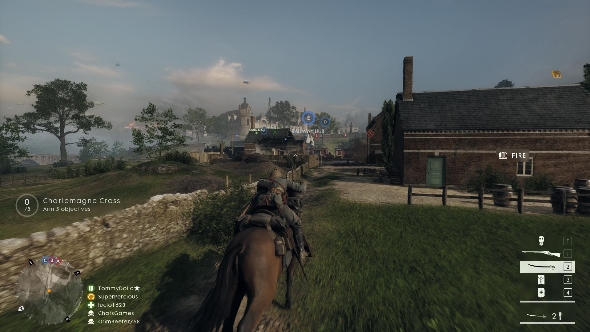
Players change every match though, and for every frustrating game I’ve had, I’ve had another that’s been an absolute riot. Part of the joy comes from DICE’s level design, which is absolutely beautiful this time around. There’s a majestic quality to the numerous fronts of World War One, be it the quaint streets of northern France, the sand dunes of the Middle East, or the lush slopes of the Venetian Alps. The actual practical design of the maps don’t hit the highs of Battlefield 2 or Bad Company 2, but they’re without a doubt the best-looking and most intricate maps the studio has ever build.
You’ll also find that environments have left the destructible ‘Levolution’ gimmick behind in favour of more dynamic terrain destruction (mortar shells will punch craters in the ground, which can then be used as foxholes) and a far more impressive weather system. Sandstorms or dense fog will cloud your vision and add tension to battles, offering sudden cover for attackers and new obstacles for defenders. They’re incredibly atmospheric: the mists on the heavily wooded Argonne Forest make it a creepy, anxiety-inducing place to be.
Maps are also connected by their theatre of war, which leads to a brand new innovation for Battlefield called Operations. It’s a game mode that links a handful of maps together as part of a simple narrative. They’re a mix of Conquest and Rush-style objectives, and often end with a big fight involving one of the Behemoths: huge, powerful vehicles such as a Dreadnought war ship or an armoured train. Operations are by far Battlefield 1’s best innovation, as they add a real feeling of momentum and progression to multiplayer.
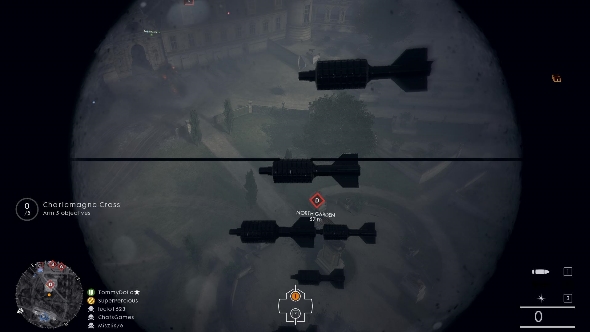
Talking of progression, there’s been a notable change in the way that your soldier evolves. Battlefield 4 was a champion of choice: all classes had a healthy selection of weapon categories and there were hundreds of modifications to unlock. Due to the comparatively ancient technology at play in 1914, there are fewer modifications available for each weapon. So instead of having mods as separate items, you now purchase weapons with various loadouts. Most weapons come in three variations, from the no-frills ‘factory’ version to the ‘trench’ variant equipped with items to make it useful in close quarters.
These guns are purchased with war bonds; a currency awarded each time you level up. Annoyingly you can only purchase items during a match from the customise screen rather than on the main menu, despite a tab detailing gear suggesting otherwise. Other items up for grabs are a variety of grenades (among them the incredibly popular gas grenade, or ‘war crime bomb’ as I like to call it), melee weapons, and gadgets for your class. While these items make sense, the weapon purchases feel wasteful. While you could argue that purchasing the ‘optical’ model of a gun is the same as just buying the scope, it feels as though you’re wasting cash on unlocking identical weapons over and over. And by having preset loadouts rather than allowing customisation of each item on your weapon, the system robs the player of personalisation.
The system also means that Battlepacks – awards that once contained random loot such as scopes and silencers – are now a system for weapon skins. These simply re-spray weapons in a variety of gaudy – if period-appropriate – brass and blued-steel colours. Thankfully they can be traded in for war bonds, but the overall feeling is that of a skins system implemented purely because other games do it.
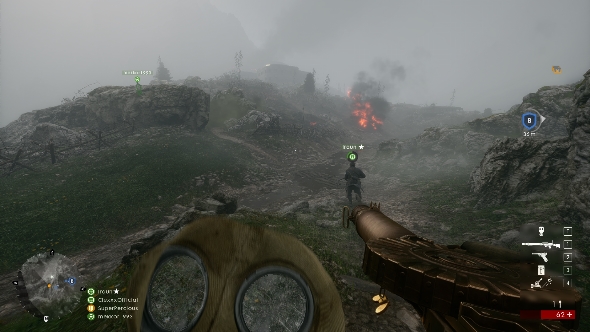
As you can tell, Battlefield 1 is a hefty package. On top of Operations and the traditional modes there’s also the largely directionless Team Deathmatch and War Pigeons, the latter a game type that’s basically capture the flag, but with a messenger bird instead of cloth-on-a-stick. While finding a game of these right now is easy, I doubt they’ll have any staying power. This is very much a game built around classic capture objectives.
Of course, all of it is for nought if the game’s netcode is broken, as we all still remember from Battlefield 4’s launch period. And the weeks after. And the following months. Thankfully it appears DICE have put the required work in this time to ensure a much smoother launch, and as of day one there’s nothing to be concerned about. Aside from one instance of a bug where I couldn’t fire my weapon until I swapped it in and out again, performance has been very solid. Matchmaking works quickly, there’s no notable lag in games, and there’s none of that audio cut-out nonsense. The friends system works smoothly too, allowing you to easily buddy up with pals and join games together with no fuss. In short: Battlefield 1 just works as you’d expect it to. With any luck, the massive influx of players that will arrive in the next few days won’t break the servers.
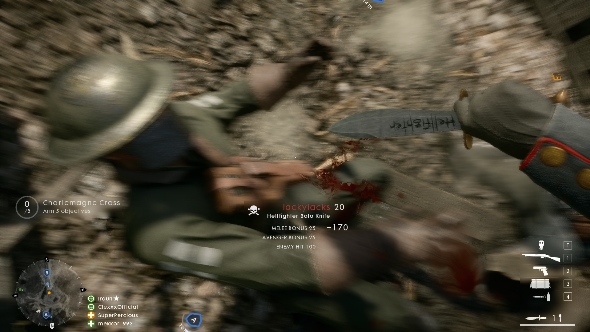
Battlefield 1 PC review final verdict
My overall feelings on Battlefield 1 are positive, but it’s not the leap forward for the series that I’d hoped. I believe the main issue it suffers from is the exact same one that Hardline wrestled with last year: the inability to successfully mesh its setting with the gameplay. Hardline never felt like a innovative cops and robbers shooter; it was simply more Battlefield. And that’s the same with Battlefield 1. For all its interesting weapons technology and stunningly beautiful map design, it’s still very much the same game as before.
In many ways that’s perfectly fine, but DICE have missed a trick to offer a genuine, meaningful change. The formula is tweaked, sometimes for the better, sometimes less so, and the end result is simply a slightly different Battlefield than before, rather than a truly progressive sequel.
It’s understandable that DICE may not have wished to risk their winning formula on the multiplayer side of things, but the campaign was a golden opportunity to provide a fresh single-player experience. Alas, the war stories toe the line of generic, and fail to offer either a compelling insight into the conflict, nor a different approach to scripted shooting.
While Battlefield 1 may not be the best epic war game DICE have ever produced, it’s still a fun, hectic, exhilarating ride. There’s no denying that the Swedish developers know exactly what key gears are required to make a superb game. It’s just that this time the smaller, outer cogs didn’t come out of the mould quite perfectly.
